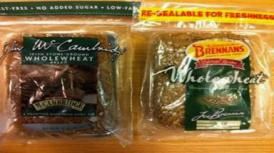Similar packaging and the potential for customer confusion formed the crux of a recent Commercial Court battle between two of Ireland's most well-known bread producers, with McCambridge Limited v Joseph Brennan Bakeries1 highlighting the key tests which are applied in so-called 'copycat' cases.
The Plaintiff, McCambridge, has been dominant in the Irish whole-wheat brown bread market for the last 50 years or so, and its packaging has accordingly acquired a strong association in the minds of consumers with the McCambridge product. Brennans Bread, the Defendant, is one of Ireland's largest manufacturers of bread and its product has become synonymous with red lettering on a yellow background.
In early 2011, Brennans Bread introduced new packaging for its whole-wheat brown bread product, which the Plaintiff contended resembled its own packaging, such that customers would buy, in error, the Brennans Bread product instead of McCambridge's product. McCambridge had been using its distinctive clear packaging since 2008. A comparison of the two products is set out below:

Brennans Bread relied upon the prominent use of the yellow and red labelling on its packaging which it argued was firmly associated in the minds of consumers with Brennans Bread. McCambridge argued, however, that the overall appearance or "get-up" of the Brennans Bread product, particularly when placed beside the McCambridge product on a shop shelf, was so similar in overall appearance that purchasing errors would be made by consumers.
Mr Justice Peart was satisfied that there was no deliberate effort by Brennans Bread to deceive or confuse the public. However, he noted that intention is not necessary to commit the tort of passing-off. The Judge considered the relevant UK and Irish case law, and concluded that the test to be applied was that of:
"the reasonably prudent shopper, who is not in any particular hurry and who neither is overly scrupulous and dilatory, and who enters the shop with the wish to purchase a loaf of McCambridge wholewheat bread. Is such a purchaser reasonably likely, because of the similarity in the get-up of the Brennans product to the McCambridge product, to exit the shop with the Brennans loaf, having intended to purchase the McCambridge loaf?"
In applying the test, the initial overall impression of the product is crucial. In this regard, the use of a competing brand name and distinctive colour scheme on the Brennans Bread product was not sufficient to prevent consumer confusion, as such features may not be clearly visible when the product is on the shop shelf. Thus, passing-off had occurred because it would take more care and attention on the part of a consumer to avoid confusion than was considered reasonable. As a result, the Court granted an injunction restraining further use of the packaging by Brennans Bread.
The case is currently under appeal to the Supreme Court. As the waiting list for Supreme Court appeals is more than three years and Brennans Bread has secured a stay on the injunction pending the outcome of the appeal, Brennans Bread can, in the meantime, continue to use its existing packaging get-up on this product.
Footnote
1. [2011] IEHC 433
The content of this article is intended to provide a general guide to the subject matter. Specialist advice should be sought about your specific circumstances.

